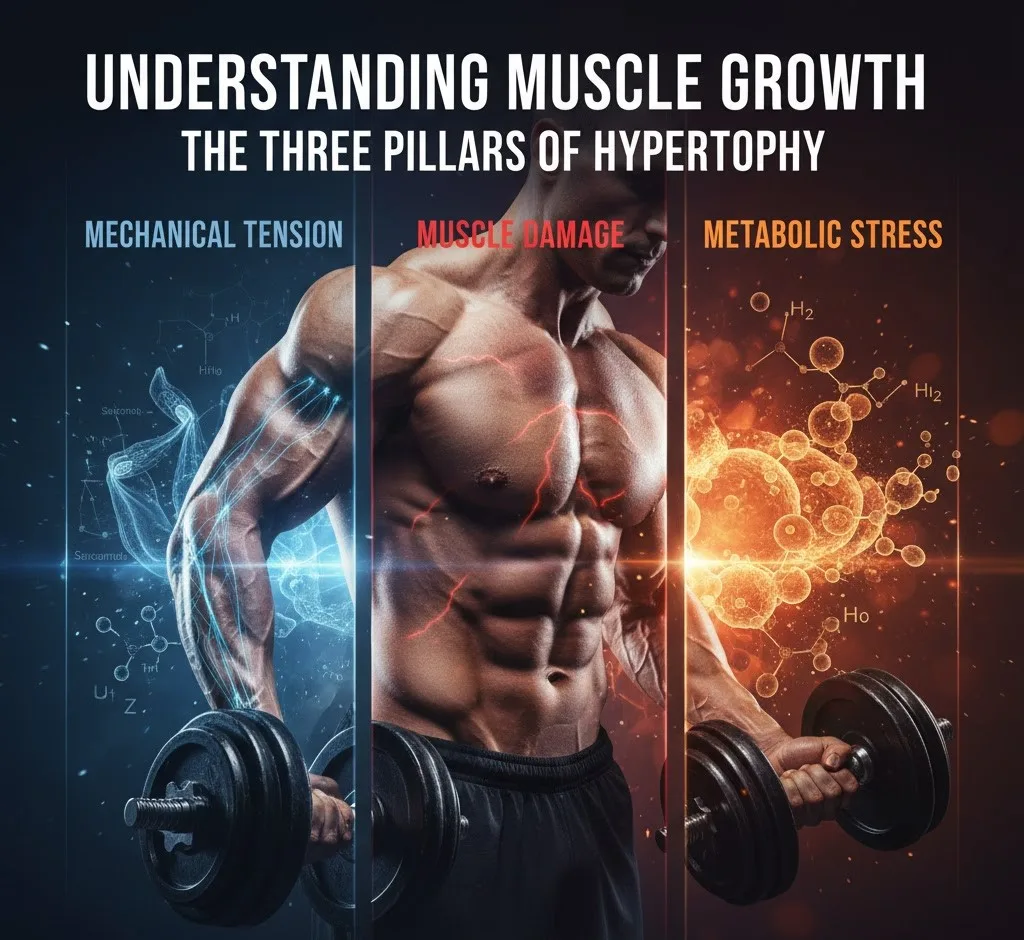Building muscle, or achieving muscle hypertrophy, is a complex physiological process that goes beyond simply lifting weights. While often associated with endless reps and heavy loads, the science of muscle growth boils down to three primary mechanisms that stimulate our muscles to adapt and get stronger. Understanding these mechanisms can help you optimize your training for maximum gains.
1. Mechanical Tension
At the heart of muscle growth is mechanical tension. This refers to the physical force or strain placed on the muscle fibers during an exercise. When a muscle is loaded with sufficient weight and stretched under tension, it signals the muscle cells to initiate a cascade of events leading to growth.
Think of it this way: when you lift a heavy barbell, your muscle fibers are put under significant stress. This stress, or mechanical tension, activates pathways within the muscle cells that tell them to synthesize more protein, ultimately leading to an increase in muscle fiber size and strength. Exercises that emphasize a full range of motion, controlled movements, and progressively heavier loads are excellent for maximizing mechanical tension.
2. Muscle Damage
Another key driver of hypertrophy is muscle damage, often experienced as delayed onset muscle soreness (DOMS) after a challenging workout. When you exercise intensely, particularly with eccentric contractions (the lengthening phase of a movement, like lowering a bicep curl), microscopic tears occur in the muscle fibers.
While the term "damage" might sound counterproductive, this micro-trauma is actually a crucial stimulus for growth. The body responds to this damage by initiating a repair process that not only fixes the damaged fibers but also overcompensates, making them stronger and larger to better withstand future stress. This adaptive response is a fundamental aspect of muscle hypertrophy.
3. Metabolic Stress
The third mechanism contributing to muscle growth is metabolic stress. This occurs when metabolites (byproducts of energy production) accumulate in the muscle during high-repetition sets or exercises with short rest periods. You've likely felt this as "the pump" or a burning sensation in your muscles.
The buildup of lactate, hydrogen ions, and other metabolites creates an acidic environment within the muscle, leading to cellular swelling and a reduction in oxygen. This stressful environment triggers various physiological responses, including increased hormone release (like growth hormone and IGF-1), activation of satellite cells (which aid in muscle repair and growth), and a greater recruitment of fast-twitch muscle fibers. While not as potent as mechanical tension on its own, metabolic stress plays a significant supporting role in the hypertrophy process.
The Interplay and Importance
While all three mechanisms contribute to muscle growth, the consensus among experts, as highlighted in the image, is that mechanical tension is the most important and arguably the primary driver of hypertrophy. It directly signals the muscle to adapt and grow stronger in response to overload. Muscle damage and metabolic stress act as complementary factors, further enhancing the overall hypertrophic response.
For optimal muscle growth, a well-rounded training program should strategically incorporate elements that stimulate all three mechanisms. This often involves a combination of heavy lifting for mechanical tension, varied rep ranges and eccentric focus for muscle damage, and higher-volume work with shorter rest periods for metabolic stress. By understanding and applying these principles, you can effectively maximize your muscle-building potential.

